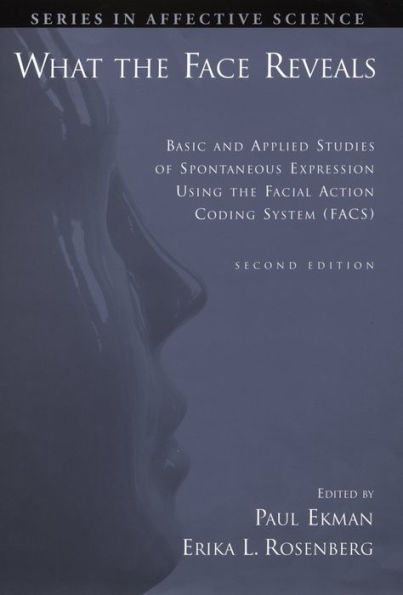What the Face Reveals: Basic and Applied Studies of Spontaneous Expression Using the Facial Action Coding System (FACS)
While we have known for centuries that facial expressions can reveal what people are thinking and feeling, it is only recently that the face has been studied scientifically for what it can tell us about internal states, social behavior, and psychopathology. Today's widely available, sophisticated measuring systems have allowed us to conduct a wealth of new research on facial behavior that has contributed enormously to our understanding of the relationship between facial expression and human psychology. The chapters in this volume present the state-of-the-art in this research. They address key topics and questions, such as the dynamic and morphological differences between voluntary and involuntary expressions, the relationship between what people show on their faces and what they say they feel, whether it is possible to use facial behavior to draw distinctions among psychiatric populations, and how far research on automating facial measurement has progressed. The book also includes follow-up commentary on all of the original research presented and a concluding integration and critique of all the contributions made by Paul Ekman. As an essential reference for all those working in the area of facial analysis and expression, this volume will be indispensable for a wide range of professionals and students in the fields of psychology, psychiatry, and behavioral medicine.
1119333249
What the Face Reveals: Basic and Applied Studies of Spontaneous Expression Using the Facial Action Coding System (FACS)
While we have known for centuries that facial expressions can reveal what people are thinking and feeling, it is only recently that the face has been studied scientifically for what it can tell us about internal states, social behavior, and psychopathology. Today's widely available, sophisticated measuring systems have allowed us to conduct a wealth of new research on facial behavior that has contributed enormously to our understanding of the relationship between facial expression and human psychology. The chapters in this volume present the state-of-the-art in this research. They address key topics and questions, such as the dynamic and morphological differences between voluntary and involuntary expressions, the relationship between what people show on their faces and what they say they feel, whether it is possible to use facial behavior to draw distinctions among psychiatric populations, and how far research on automating facial measurement has progressed. The book also includes follow-up commentary on all of the original research presented and a concluding integration and critique of all the contributions made by Paul Ekman. As an essential reference for all those working in the area of facial analysis and expression, this volume will be indispensable for a wide range of professionals and students in the fields of psychology, psychiatry, and behavioral medicine.
92.99
In Stock
5
1

What the Face Reveals: Basic and Applied Studies of Spontaneous Expression Using the Facial Action Coding System (FACS)

What the Face Reveals: Basic and Applied Studies of Spontaneous Expression Using the Facial Action Coding System (FACS)
92.99
In Stock

Product Details
| ISBN-13: | 9780199792726 |
|---|---|
| Publisher: | Oxford University Press |
| Publication date: | 04/14/2005 |
| Series: | Series in Affective Science |
| Sold by: | Barnes & Noble |
| Format: | eBook |
| File size: | 25 MB |
| Note: | This product may take a few minutes to download. |
About the Author
From the B&N Reads Blog
